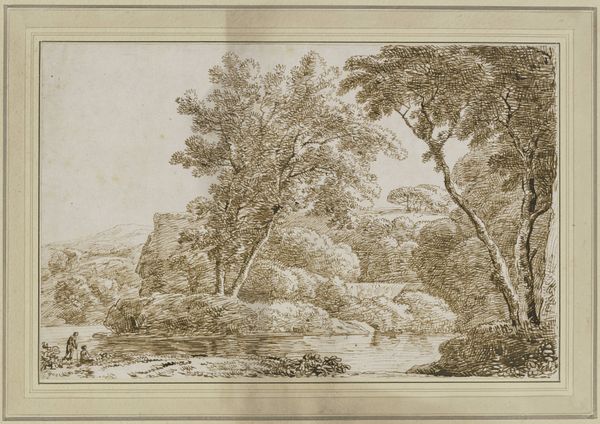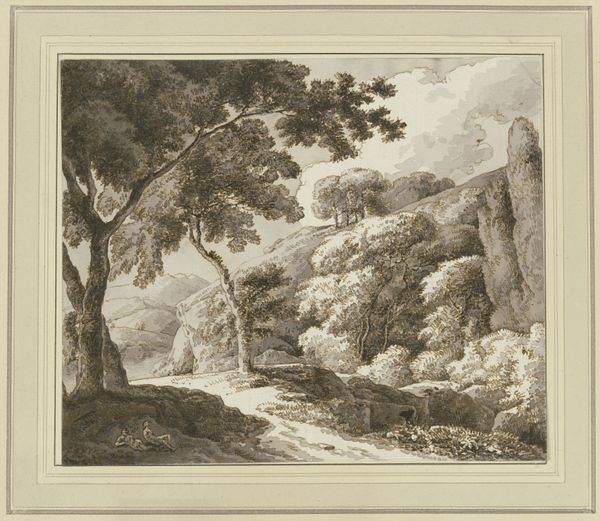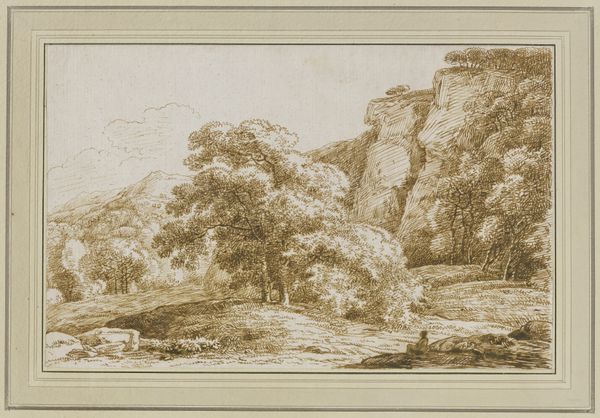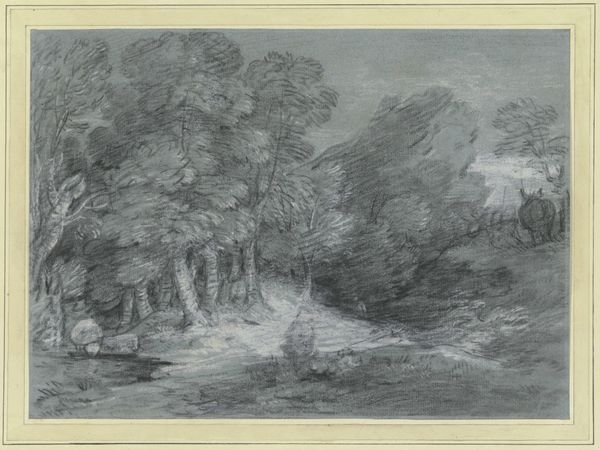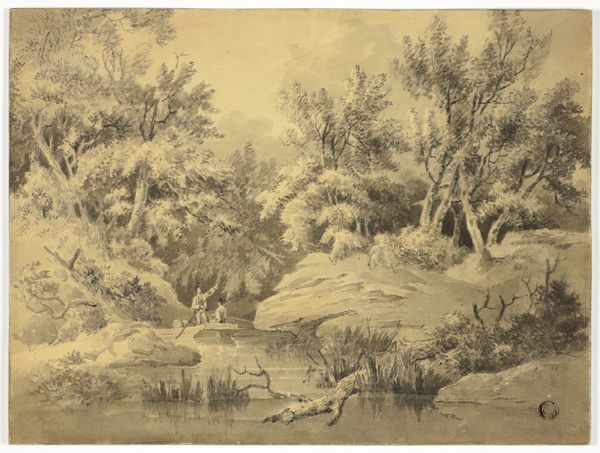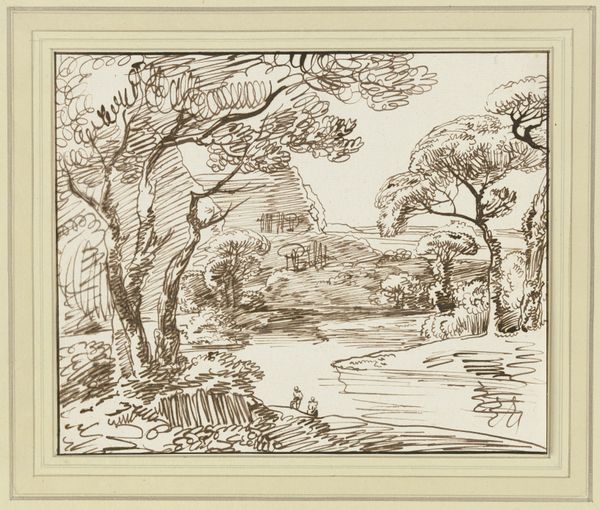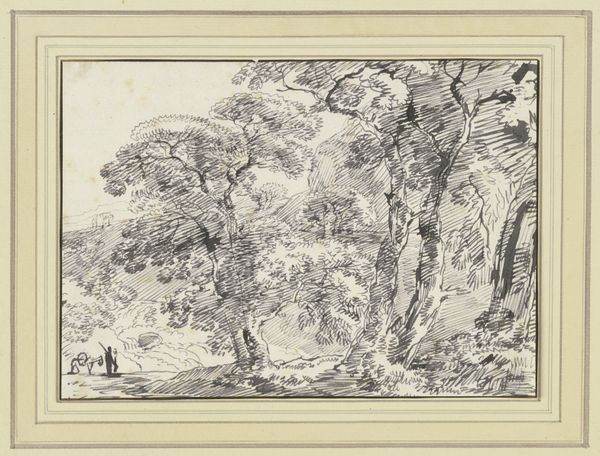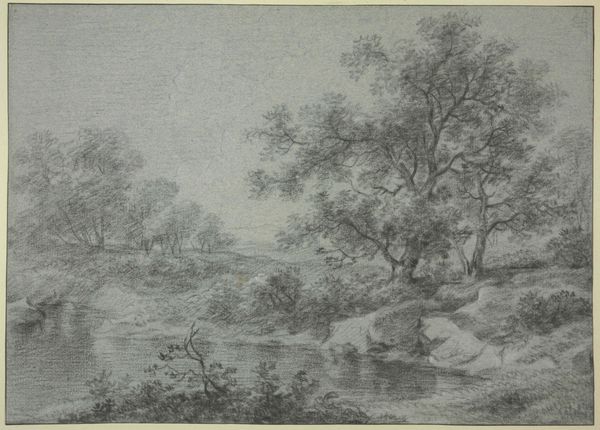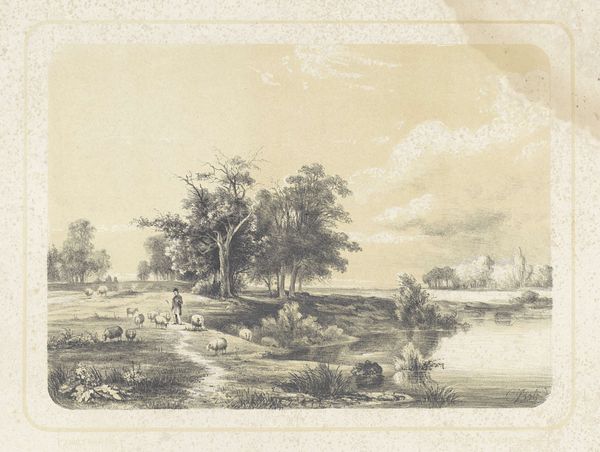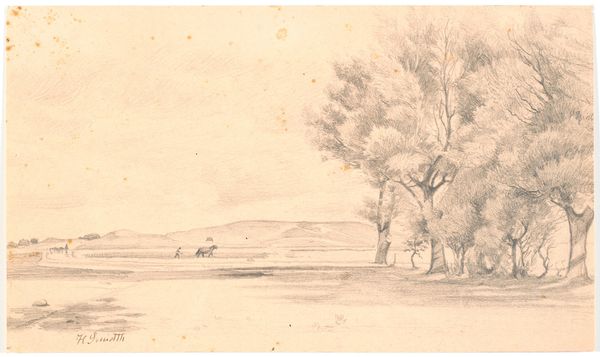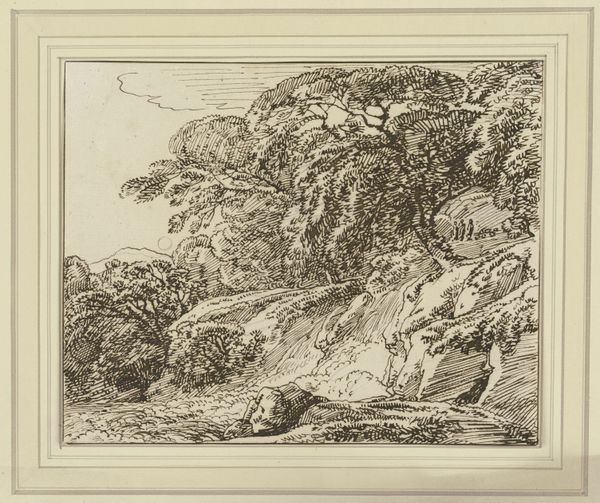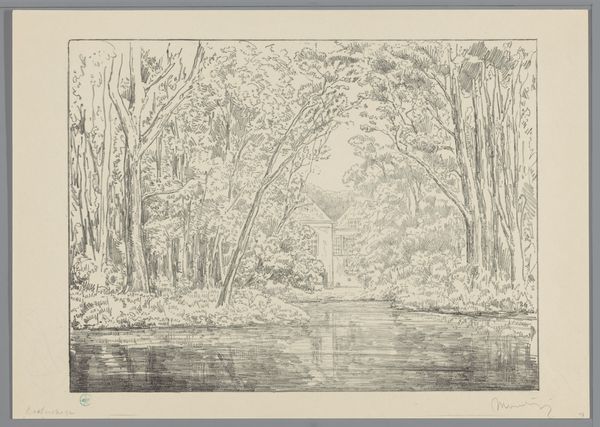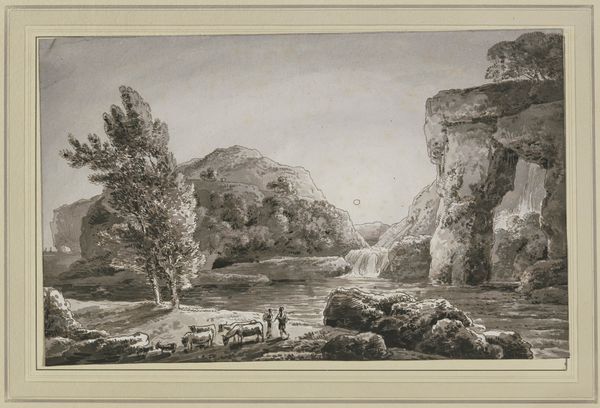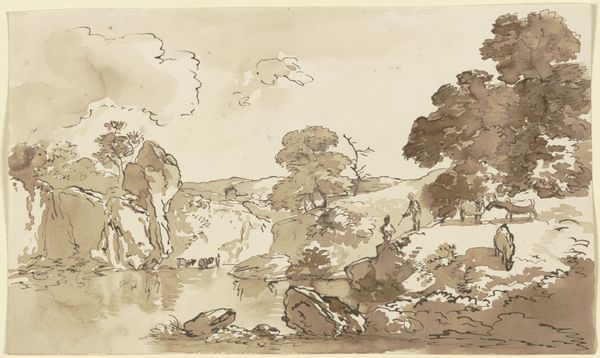
drawing, ink
#
drawing
#
landscape
#
classical-realism
#
etching
#
ink
#
romanticism
#
line
Copyright: Public Domain
Curator: The work before us is a drawing titled "Landschaft mit Wasserfall und lagerndem Paar" by Franz Kobell, rendered in ink. Editor: It's strikingly peaceful. The monochromatic ink gives it a timeless quality, like looking at a scene through a sepia-toned dream. There’s an understated beauty in the details of the foliage. Curator: Kobell was quite adept at capturing the idealized landscapes favored during his era. Think about how landscape became so prominent in art of the 18th and 19th centuries. Nature was, in a way, both a backdrop to human activity, and at times, its own central character in artistic and cultural imagination. Editor: Exactly, and notice how even in this ostensibly "natural" setting, there's a deliberate staging. The waterfall, the reclining figures – everything feels carefully placed. It reminds me of how societal norms often dictate even our leisure activities, how even in nature, we are never truly free from performativity. The question remains for me if this artistic choice romanticizes or recognizes those circumstances. Curator: That's a fascinating point. We should also consider how the depiction of leisure itself speaks to class and privilege. Who has the time and resources to recline by a waterfall? These seemingly innocent scenes are steeped in social commentary. Kobell was born into an artistic family, moving through prominent intellectual and court circles, this context informs how to approach decoding the scene he composed. Editor: It definitely invites a closer look at what isn't being shown—the labor, the social structures, all supporting this moment of quiet contemplation, if we can call it that. Curator: Indeed. And while the overall impression is serene, Kobell's sharp, precise linework injects a certain dynamism, wouldn't you agree? It really brings the elements of water and fauna to life in particular. Editor: I do. It stops the work from simply being a prettified landscape. There's an almost unsettling sense of contained energy. The ink rendering amplifies this tension, in some ways limiting its expressive capacities, in others expanding it through creative applications and techniques that yield dynamism. It is definitely a powerful visual meditation. Curator: Well, considering the work in its historical context and appreciating its contemporary relevance, this Kobell landscape reminds us that art, even at its most pastoral, reflects a layered social narrative. Editor: And by examining the intersection of artistic representation, nature, and social structures, hopefully we can question the conventions that continue to shape our contemporary landscape.
Comments
No comments
Be the first to comment and join the conversation on the ultimate creative platform.
